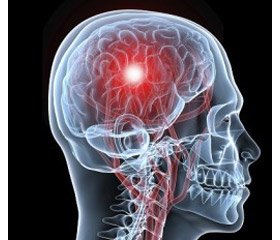Журнал «Медицина неотложных состояний» 1 (64) 2015
Вернуться к номеру
Conduction of infusion therapy in patients with acute stroke. Medical case
Авторы: Bondar M.V., Butko I.S., Tsvyk I.M. - National Medical Academy of Postgraduate Education named after P.L. Shupyk, Kyiv, Ukraine
Рубрики: Медицина неотложных состояний
Разделы: Справочник специалиста
Версия для печати
Infusion therapy is one of the main methods of intensive care, which the correction of functional disorders and biochemical disorders is carried out due to. Holding infusion therapy in patients with hemorrhagic stroke aimed at: natural replenishment of water losses, replenishment pathological loss of water and electrolytes, support cerebral perfusion pressure in the normal range, recovery of normal plasma osmolarity, acid - base balance, improve blood rheology and microcirculation.
As an example clinically and scientifically based approach to select the program infusion therapy it has been shown the clinical case of successful treatment of a patient with hemorrhagic stroke, the sixth day of the disease is complicated by the diabetes insipidus and cerebral salt washing syndrome.
Patient К, 59 years, with hemorrhagic stroke admitted to the intensive care unit of a hospital Kyiv 06.05.2009 year. Neurological status during hospitalization: the level of consciousness of the Glasgow coma scale (GCS) sopor, motor aphasia, photoreaction weakened, asymmetry of mimic and masticatory muscles, right sided hemiplegia. Designed standard therapy. After one day recorded positive neurological dynamics: improving language, the emergence of movements in the right extremities, clear consciousness the GCS, elements of motor aphasia, right sided hemiparesis, intracranial pressure (ICP) = 6 mm Hg. On the 7th day recorded an increase in urine output to 4,700 ml / day with a specific weight 1018, distribution of cerebral edema in hypothalamic area on the results of MRI, Na - 141,9 mmol / l, blood glucose – 4,6 mmol / l, total protein – 62 g / l. For intravenous infusion used a solution of sodium chloride (NaCl) at 0.9% concentration. The patient increased dieresis. On the 12th day of diuresis was 17.0 l with a specific weight 1003. Diagnosed of central diabetes insipidus. Desmopressin treatment received to the patient at a dose of 0.8 mg / day per os. Intravenous infusion of 14,0 l / day sodium chloride at 0.9% concentration and drink 3,1 liters. On the 13th of diuresis was 25,4 l. Desmopressin dose increased to 0.16 mg / day per os, intravenous infusion of 24,0 l / day sodium chloride at 0.9% concentration and drink 1,7 liters. On the 14th day of diuresis was 3,5 l, plasma sodium decrease from 134,3 to 127,3 mmol / l and increase of specific weight to 1020, which is not usual for central diabetes insipidus. Desmopressin dose decreased to 0,2 mg / day per os. Aldosterone blood plasma be below the mark. Disease complicated by the developing of simultaneous central diabetes insipidus and cerebral salt washing syndrome. For the treatment of dexamethasone appointed at a dose of 48,0 mg / day intravenous. On the 15th day launched correction of hyponatremia, We used for this a solution of sodium chloride at 3% concentration – 800-1600 ml / day, with parallel infusion a solution of sodium chloride (NaCl) at 0.9% concentration – 1,4-2,0 l / day. Dexamethasone substituted for hydrocortisone 500 mg / day intravenous. On the 19th day hydrocortisone substituted for kortyneff (Fludrocortisone). a dose 0,1 – 0,2 mg / day per os. Monitored hourly diuresis, natriuresis daily, the amount of sodium in the blood (4 times / day), with a change in the dose of desmopressin and kortyneff.
On the 15th day the patient takes desmoperssin nose spray doses 40 – 50 µg / day on 4 – 5 intake, nose spray is more effective than pills. The dose was selected kortyneff depending on the amount of sodium in the blood and daily excretion of sodium in urine and accounted 0,1-0,15-0,2 mg / day (tablet 1-1,5-2.) on 1-3-4 intake.
Against the background of hormonal therapy sodium in the blood level ranged from 120,6 mmol / l (26th day of 22 hours) to 143,4 mmol / l (30th day of 7 hours). Natriuresis changed from 590,7 mmol / day (16th day) to 72,9 mmol / day (30th day). Remind, natriuresis normal changed from 40 – 220 mmol / day. Urine specific weight from 1006 to 1022. The duration of treatment in the intensive care unit compose 34 days. The patient was transferred to the department of Neurologists. It came complete regression of neurological symptoms. Later he fully resume one's health and he got working.
Clinical case confirms that the brain is a central element in the regulation of water and electrolyte disturbances. Acute brain damage including acute cerebrovascular accident may cause severe water and electrolyte imbalance the cerebral genesis. In clinical practice can meet a combination of central syndromes of water and electrolyte imbalance, they sometimes have the opposite direction in the treatment, which complicates their timely diagnosis. Monitoring survey water-electrolyte metabolism (hourly urine output, daily urine, daily excretion of electrolytes, concentration of plasma electrolytes, urine specific weight, central venous pressure and other) provides timely make the correction of water and electrolyte balance disturbances. In each case, an individual approach is necessary to select the program infusion therapy in view of brain damages and syndromes of water and electrolyte balance disturbances. Among the drugs antidiuretic hormone most effective desmopressin. Among glucocorticoid drugs most mineralocorticoid activity has kortyneff (Fludrocortisone). By decrease mineralocorticoid activity glucocorticoid drugs are in the following order: fludrocortisone, hydrocortisone, prednisolone, dexamethasone, betamethasone.

